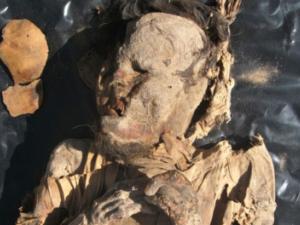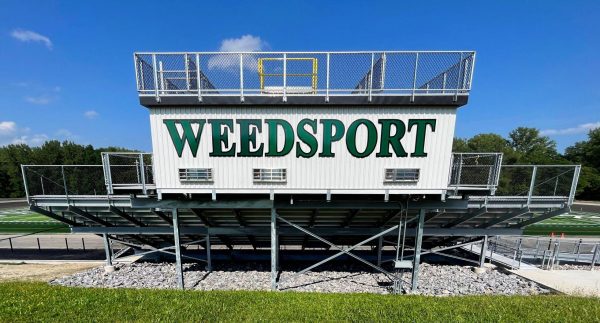Bodies From the Ice

March 9, 2015
The glaciers of the Italian Alps are melting only to reveal horrors of the Great War, Hidden for nearly a Century.
Possibly the strangest consequence of global warming, glaciers far north in the Italian Alps are slowly melting to reveal the mummified frozen corpses of soldiers killed during World War I.
Who were these men whose bodies were preserved in the ice? They were casualties of the White War, an obscure part of WWI which lasted from 1915 through 1919.
In 1914, both Trentino, the province in which the village of Peio lies, and the neighboring South Tyrol were Habsburg domains. In May of 1915, Italy, recently unified and eager to settle her frontiers permanently, looked to annex the two provinces, along with Trieste, as “unredeemed lands.” Due to their large ethnic Italian populations, the aim was to liberate them.
Italy decided to join the Great War on the side of the Allies, despite the fact that during the Italo-Turkish War in Libya (1911–1912), the Italian military suffered severe equipment and ammunition shortages not yet repaired before Italian entry into the Great War.
This alliance gave rise to a front on the northern border of the country which abutted the enemy Habsburgs, part of the Central Powers. Conflict was already raging on the western and eastern fronts and now a third front had opened up. It stretched from the Julian Alps, which Italy now shares with Slovenia in the east, to the Ortler Massif near the Swiss border further west, some 250 miles.
The front, far up in the mountains at elevations of over 6,500 feet, required for a new kind of warfare to be developed. Elite Italian soldiers called the Alpini fought their Austrian equivalent, the Kaiserschützen, with specialized weapons and infrastructure they constructed an entire infrastructure of war at the high altitude, including trenches carved out of the ice and cableways for transporting men and ammunition to the peaks, In the Dolomites, the Austrian Corps of Engineers dug an entire “ice city”—a complex of tunnels, dormitories, and storerooms—out of the glacier. Russian Prisoners of war taken by the Central powers,on the Eastern front were often used as human pack mules or put to work weaving the straw overshoes that protected the Austrians’ feet from frostbite.
Though the war in itself was disastrous , the effects of guns and bombings on the White War’s combatants were dwarfed by the effects of Mother Nature For both sides, the worst enemy was the weather, which killed more men than the fighting. At those altitudes, the temperature could fall to -30 degrees celsius. Weather services of both armies recorded an average snowfall of thirteen feet in 48 hours across the eastern Alps, but the mountains deadliest killer was the “white death” — death by avalanche(often set in motion by artillery fire) — on December 13, 1916 10,000 men were killed by the “white death”,This tragedy was dubbed ‘White Friday’
One of the oddities of the White War was that both the Alpini and the Kaiserschützen recruited local men who knew the mountains, which meant that they often knew each other. Sometimes family loyalties were split. There are many stories of people hearing the voice of a brother or a cousin in the thick of battle.
Peio was once the highest village in the Austro-Hungarian Empire and had a ringside seat to the conflict of the White War. What was once a battle front is now a small ski resort town and has become the center of an archeological treasure trove. The people of Peio were forced to live through this calamity because unlike the inhabitants of other frontline villages, they were made to stay put. ‘The Emperor decreed that this village would not be evacuated,’ Angelo Dalpez, Peio’s mayor,says. “As the highest village in the empire, it was symbolic —a message to the rest.” They worked as porters and suppliers of food. They tended the injured, buried the dead, and witnessed the remodelling of their ancestral landscape (constant shelling lowered the summit of one mountain, San Matteo, by over 20ft).
In 1919 the Treaty of Saint-Germain-en-Laye awarded Trentino to Italy. The People here had always felt autonomous, in their mountainous border region, and under the new arrangement the Italian government granted them a greater degree of independence but they never forgot their history. Many of their relations had fought for Austria on the Habsburg’s side, and when the soldiers started melting out of the ice, they looked on them as their grandfathers or great-grandfathers.
Peios war museum fills out the picture. Inside its display cases are primitive-looking surgical instruments, rosaries, porcelain pipes that resemble small saxophones, decorated in the Tyrolian style, and “trench art” carved out of fragments of shells or shell casings ,even a cross woven out of barbed wire.
In the hungry period following the armistice, the villagers roamed the mountains looking to salvage and collect leftover war materials, mostly metal, to resell by the pound. The most sought-after items were the copper, brass, and lead inside large, unexploded bombs.
“We brought a mallet with us and would pound the bomb at a very precise point so that the casing would break away,” 92-year-old Giacinto Capelli, one of the last salvagers, recalled before passing away last year. “If we made any mistake, the powder left inside could have exploded in our faces. It was such hard work. We went back down the mountain with as many as 70 kilos (150 pounds) on our backs. But there was no work in the village, and salvagers made good money. The first time I came home with 320 liras($10), my father jumped for joy, crying, “Now we can have polenta(cornmeal boiled into a porridge) all year long!”
but some pieces were kept as souvenirs, later donating them to the museum when it opened 10 years ago. “They consider the museum their collective property,” Dalpez says. “They’re proud of it.”
in 2004, when Maurizio Vicenzi, a local mountain guide and the director of Peio’s war museum, whose own family fought for the Austrians, stumbled on the mummified remains of three Habsburg soldiers hanging upside down out of an ice wall near San Matteo — at 12,000ft, scene of some of the highest battles in history. The three were unarmed and had bandages in their pockets, suggesting they may have been stretcher-bearers who died in the final battle for the mountain, on September 3, 1918.
When a pathologist was granted permission to study one of the bodies, to try to understand the mummification process, there was an outcry among local people who felt that the dead were being profaned ,The three now lie in the cemetery of San Rocco.
In the decades since the end of the Great War, the world has warmed up and the glaciers have began to retreat, revealing the debris of the White War. The material that, beginning in the 1990s, began to flood down from the mountains was remarkably well preserved. It included a love letter addressed to Maria and never sent, and an ode to a louse, “friend of my long days,” scribbled on a page of a soldier’s diary.
The glacial cold has kept the bodies perfectly intact ,the fallen soldiers have been found so well-preserved in the ice that clothes, hair and skin still remained on the bodies – even the lice in their hair was still there, like frozen mummies, Bare bones are wrapped in the tattered remains of uniforms, gruesome reminders of now-distant violence. The two soldiers, who were disinterred in 2014 were blond, blue-eyed Austrians,ages 17 and 18 who died on the Presena Glacier. Both had bulletholes in their skulls. One still had a spoon tucked into his puttees(a covering for the lower part of the leg from the ankle to the knee) — common practice among soldiers who travelled from trench to trench and ate out of communal cooking pots. When they were killed, their fellow soldiers had buried them side-by-side in a crevasse in the Presena Glacier, which has melted steadily over the decades since. Franco Nicolis of Trento’s Archaeological Heritage Office told The Telegraph how he felt upon seeing the bodies:
“They feel contemporary. They come out of the ice just as they went in,” he says. “In all likelihood the soldiers’ mothers never discovered their sons’ fate.”
More than 80 soldiers who fell in the White War have been discovered in recent decades and
There are certainly many more to come, but one body continues to elude the rescuers – that of Italian war hero Arnaldo Berni, the 24-year-old Captain who led the Italians to their conquest of San Matteo on August 13, 1918. Berni’s story illustrates the tragedy of a war where Herculean feats produced trivial territorial gains, and no one down below took much notice. After his victory, in a letter that seems to have slipped past the censors, Berni complained to relations about the press coverage. “There is a short and confused description of our battle, which was in fact brilliant and incurred very little loss of life… The journalists don’t come to us at such high altitudes, so the prodigious efforts of our men are not known.” He died three weeks later, when the Austrians dropped a shell on the crevasse in which he was sheltering. Hardly two months later, the Italians dealt a shattering blow to the Austro-Hungarian war effort at Vittorio Veneto, on the Venetian plain, and the war was over.
There have been many attempts to find Berni over the years, first by his own men, then by his devoted sister, Margherita.
Archaeologists continue to explore the Alpine battlegrounds, uncovering man-made caves and artifacts like engines and guns. With each new find they discover a new piece to the puzzle and fill in the blanks of a history long forgotten and unwritten.
“Snow is truly a sign of mourning.”, the Italian war poet, Giuseppe Ungaretti wrote in 1917.
For further information, check out these links:
Mummified Austrian soldier 2
http://i.dailymail.co.uk/i/pix/2010/08/25/article-0-0AEA5A01000005DC-947_468x625.jpg
Mummified austrian soldier 4
http://www.warhistoryonline.com/wp-content/uploads/2014/01/One-of-the-remains-of-the-two-soldiers-found-in-the-Presena-glacier-2012.jpg
Monte Palon trench 1
https://ww1photographs.files.wordpress.com/2012/05/palon.jpg?w=584
Austrian barracks
https://ww1photographs.files.wordpress.com/2012/09/mountains.jpg?w=584
Snowman in the visage of German Kaiser Wilhelm II symbolically killed by a bayonet in his heart
https://ww1photographs.files.wordpress.com/2014/07/snowman.jpg?w=584&h=438
Artillery during the war in Italy, guns were mounted on a concrete support. Some of them still can be found in the mountains
https://ww1photographs.files.wordpress.com/2013/09/antiaircraft.jpg?w=584&h=366
The mountains of the Tonale Pass still wear the wounds of the war clearly shows the effect of Italian shelling on its slopes
https://ww1photographs.files.wordpress.com/2013/07/shelling.jpg?w=584&h=438
Bronze monument in honor of the Mules who carried armaments and supplies to the front
https://c2.staticflickr.com/8/7083/7327710502_25c708f6f5_b.jpg
Italian war Song, sung by group of Alpini “Sul ponte di Bassano”









